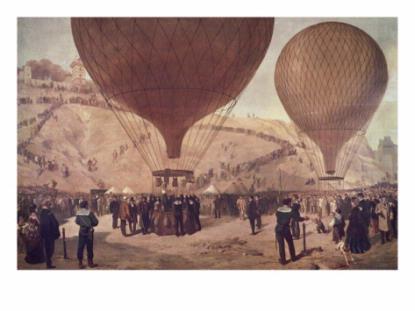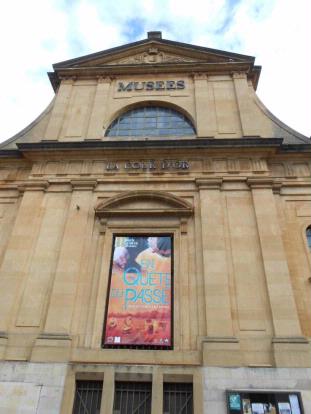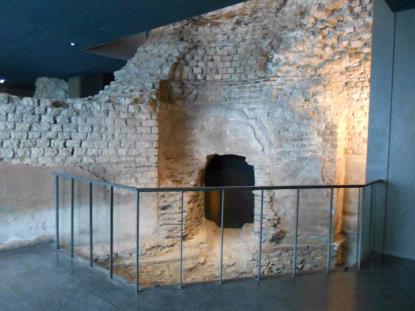My husband, son and I just returned from a two-week European trip, mostly in the Netherlands with a side journey to the city of Metz, capitol of the Lorraine province in Northeast France, very close to Belgium, Germany, and Luxembourg. We were able to do this because my husband had been an AFS exchange student when he was 18 and had lived with a family in the Netherlands for a year. The relationship has endured, and they were kind and generous hosts (again) to our family, taking us hither and yon, thinking of interesting and manageable day trips that would engage us, including our seven-year-old, cooking meals, and helping us make our connections to other points in our journey.
Figuring out a train journey to Metz from their town of Paasloo, in a sparsely populated agricultural district north of Amsterdam and Holland, proved more challenging than we had thought it would be, even though we had realized that we didn’t have access to enough train schedule detail from the States to figure it out on our own beforehand. With this logic problem before us, we were soon on the Dutch rail web site with our hosts Beer and Ynske, typing in different combinations of cities and nodes on the rail line to see what would work. We knew we wanted to bypass Paris and take a more rural train route, in a more straight southeastern line than the Paris route would have been. We also were working in a visit with their son’s family, which got us closer to a major train station: Antwerp, Belgium. So at last we hit upon a route that seemed workable, Antwerp to Brussels, to Luxembourg, to Metz. Only three trains. Our hotel of choice was a quick walk from the train station.
Then we typed these city stations into the system to call up a return itinerary. Not possible. You couldn’t do the same route in reverse. After more thinking and entering new combinations of cities, we developed our homeward itinerary, which this time would bring us quite close to Paasloo: Metz to Luxembourg to Liège in Belgium, to Maastricht in the Netherlands, to Utrecht, to Steenwijk. Not ideal, some tight connections to make, and we knew that with several trains came increased likelihood of delays, but it seemed possible and also fun. We all enjoy train rides, even long ones. And not least, the idea of the obscure and difficult to figure out train journey appealed to Mark and me. This is the kind of thing that discourages tourists and narrows their options. With the luxury of help from our Dutch family, we could figure out a place that most Americans, including us until recently, hadn’t heard of.
We arrived at Metz in the late afternoon and found our hotel instantly. Grandeur met us at the station and did not leave us the whole time we were there: astonishing structures, cohesive golden stone neighborhoods built around generous plazas, sculpture, beauty, and oldness were all around us.
Its very oldness as an urban development was what had lured us to this place to begin with. Mark had been doing a lot of reading about the French Revolution and its aftermath, focusing on the Siege of Paris by the Prussians. Metz figured in this history, itself having been under siege by Prussian forces in 1870. Metz was also an area from which came some of the first dirigibles and hot air balloons—these were the only means of leaving Paris during the siege, and this is a detail that put Metz on the map of Mark’s imagination.

But this is just recent history–a light scratch on the surface. Further exploration in anticipation of the trip (thank you, Wikipedia) revealed the ancientness of the city of Metz: it has been a city site since the Iron Age, was colonized by Romans, and then emerged as the capitol of Austrasia in the Dark Ages. This more ancient history is not easy to follow with a cursory examination, but in a nutshell: Metz was a Celtic Iron Age settlement, one of several to be found in this region of Europe and considered a remnant of La Téne Culture, which flourished from 450 BCE to the Roman conquest in the 1st century AD. La Téne is named for an archeological site in Switzerland, discovered in 1857 that yielded multiple artifacts. Characteristic artifacts with consistent ornamentation include fibulae (brooches), torcs (rigid, open-ended neck rings), and weapons, shields and helmets with inscribed geometric patterns and scrolls, in particular the triads of scrolls known as “triskeles.” Much of this ornamentation and design aesthetic is also found in the artifacts of the more well-known Celts of Great Britain and Ireland.
While there, we visited the Golden Courtyard Museums, not realizing how vast they were when we entered what seemed a modest-sized building.

In fact they occupy the palaces of Austrasia’s kings; Metz was the capitol of this kingdom, which was an entity for roughly two hundred years, 511-719 AD. The only visitors there (!), we were eager to see the Roman Baths (discovered during an expansion of the museums in 1930) and evidence of the earlier Iron Age culture—the collection seemed to be organized with the oldest antiquities in the deepest, labyrinthine subterranean floors, with more contemporary works of fine art on the top floors. Mark was keen to see the altar of Mithras, a relic of a religion known as “Roman Mithraism.” We didn’t find this, but we did find the Roman baths and intriguing fragments from the civilization that preceded the Romans, including skeletons accompanied by bottles and pottery jars in the floor under glass. Otis liked these.

The density and complexity of Metz culture doesn’t stop here, of course, but I will cease my summarization. All of this is to say, that even the most cursory peak into the cupboard of this city’s history gave us worlds upon worlds and stories within stories to explore and inspired awe for age and the preservation of human material culture. I might also mention how seeing these things, large and miniscule, made vivid the scale of human achievement and the evidence of lost skills. The tourist/outsider perspective of being Elsewhere helped to heighten our impressions.
Fast forward: home again. Flying over New York and Connecticut brings the welcome sight of autumn trees and forests and a less managed approach to rural spaces than we saw in the Netherlands, which is utterly mitigated, everywhere, by humans. Thinking about oldness, about the glow of the ancient that we experienced in Metz, I am forced to acknowledge that the land I live on and see every day is no less old, and it contained a civilization that I know little about, in part because the remnants of their material culture are fewer: the Pocumtuck people who lived in the Connecticut River Valley were an agricultural and hunting people, and their homes were not permanent edifices. But there must be more evidence than I’m aware of that provides clues to the way they lived and what they believed. Can I channel newly awakened curiosity and learn more?
Images, top to bottom:
“Gambetta’s departure for Tours on Armand Barbes, 7 October 1870, Montmartre,” by Jules Didier
Musée La Cour d’Or, Metz
Roman Baths, in Musée La Cour d’O


